Method
In the first experimental vineyard, we grafted four Robola biotypes onto two different rootstocks and evaluated yield and qualitative characteristics of the resulting eight combinations. In the second experimental vineyard, we evaluated the effect of roto-tilling on soil properties as opposed to no-till.
The first experimental vineyard of 0.2 ha was established in 2012 in the middle of a larger vineyard at location Lakomatia of Omala, a valley with ideal pedoclimatic conditions for the development of the noble characters of the PDO wine “Robola of Kefallinia.” The aim of the experiment was to measure the effect of combinations of two factors (rootstock and scion) on the quantitative and qualitative characteristics of the produced grapes. We followed a common, time-tested experimental design called factorial randomized complete block design (Fig. 1).

Figure 1. Randomized complete block design with two factors, rootstock and scion, at the Omala region of Cephalonia. Each experimental unit consists of 20 vines, 10 horizontally x 2 vertically. The symbol “*” denotes the 1103 Paulsen rootstock, whereas the symbol “+” denotes the Richter 110 rootstock. Robola biotypes are color coded from V1 to V4 as follows: Red = V1, yellow = V2, green = V3, white = V4black = unused, grey = margin rows, unused.
The second experimental vineyard of 0.075 ha2 was established in 2012 at the farm of the Ionian University in Argostoli. The aim of the experiment was to measure the effect of two factors (method of controlling native vegetation and grape variety) and their combinations on the quantitative and qualitative characteristics of the produced grapes and soil quality. We followed the experimental design called split plot design, whereby each half of the vineyard is subject to a different level of management (Fig. 2).

Figure 2. Split-plot design replicated in three blocks at the farm of the Ionian University in Argostoli. The first factor is management of native vegetation at two levels: M1 = no till and M2 = conventional till. The second factor is grape variety at 10 levels, V1 to V10. Each experimental unit consists of two vines.
The first level of management consists of incorporating the native vegetation with a roto- tiller, whereas the second level of management consists of cutting the native vegetation with a brush cutter and leaving it on the ground as mulch to retard new growth.
We drafted timetables of farm operations for each vineyard and for each season, taking into account the annual growth cycle of grapevines as well as customary farming practices in the viticultural zone. Farm operations included base fertilization, winter and summer pruning, controlling native vegetation with shoulder-mounted weed cutters, hoeing and weeding, roto- tilling, sprayings, and harvest (Fig. 3–23).

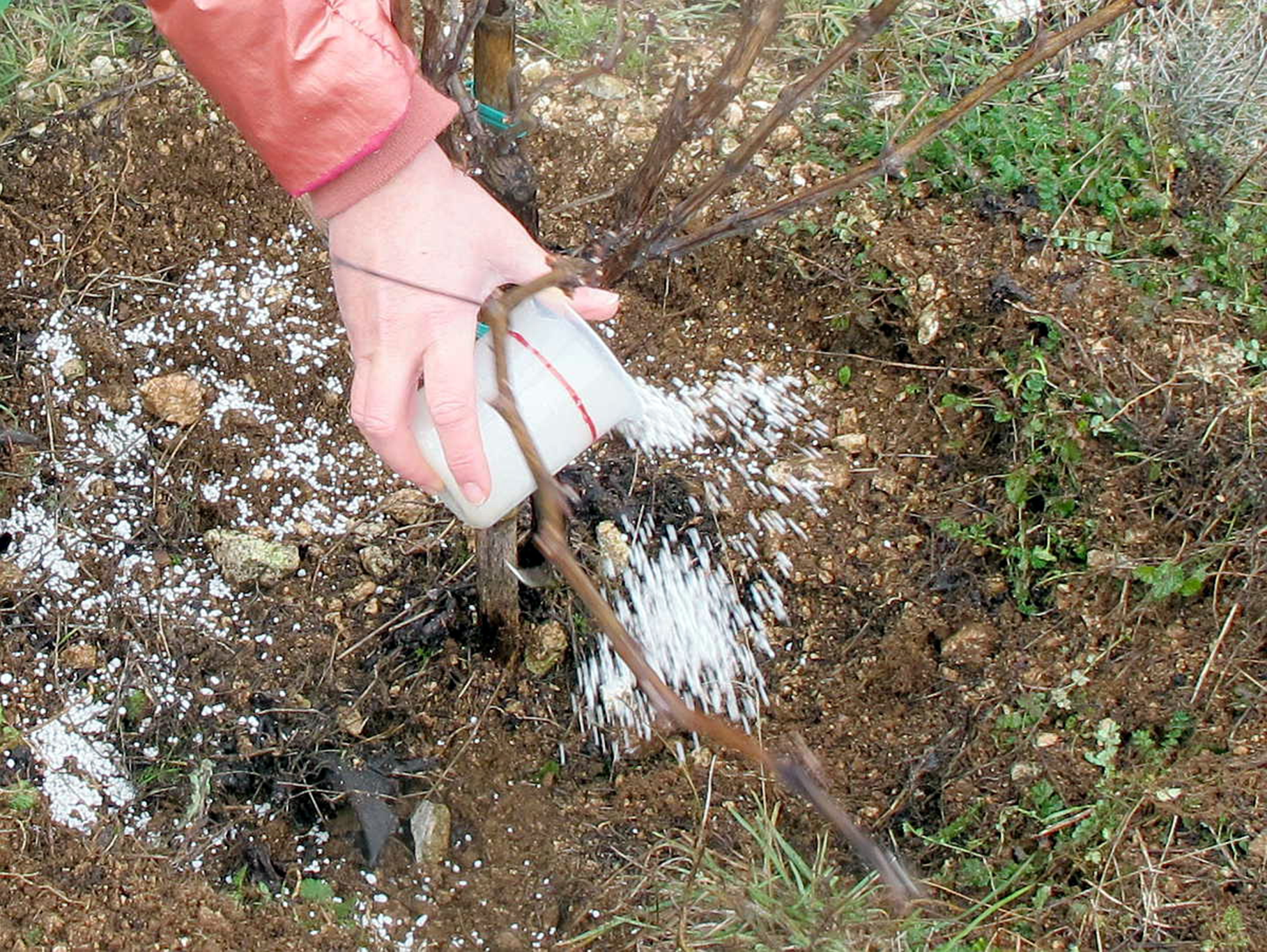
Figure 3. Base fertilization at the Omala vineyard: (a) hoeing around each vine and (b) spreading potassium and magnesium sulfite fertilizer.

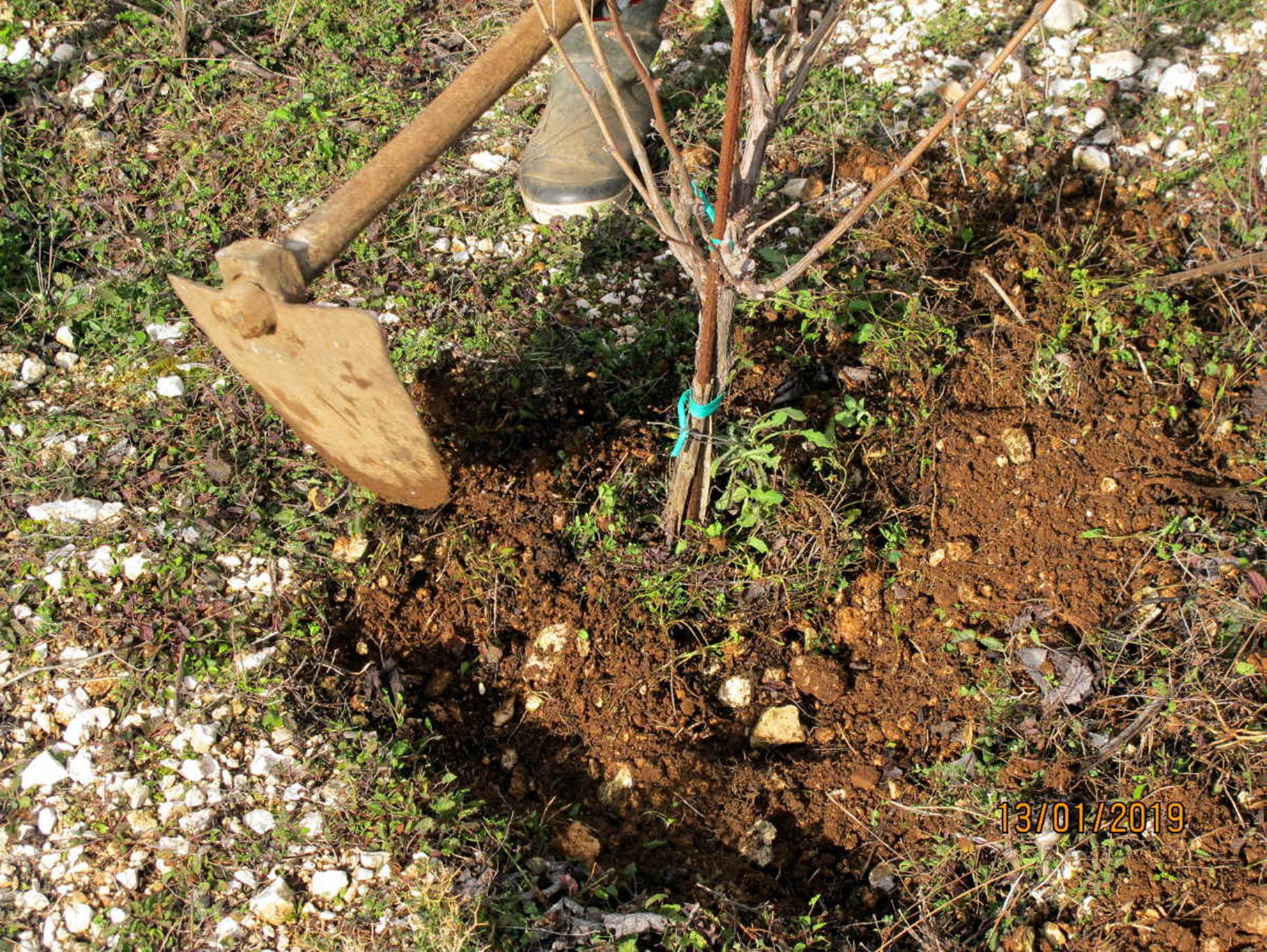
Figure 4. Base fertilization at the Omala vineyard: (a) spreading organic fertilizer 10-4-3 and (a) hoeing around each vine to incorporate the fertilizer.


Figure 5. (a) pruning at the Omala vineyard: we leave four shoots that will later be shortened to 3–4 buds, and (b) pruning at the University vineyard.
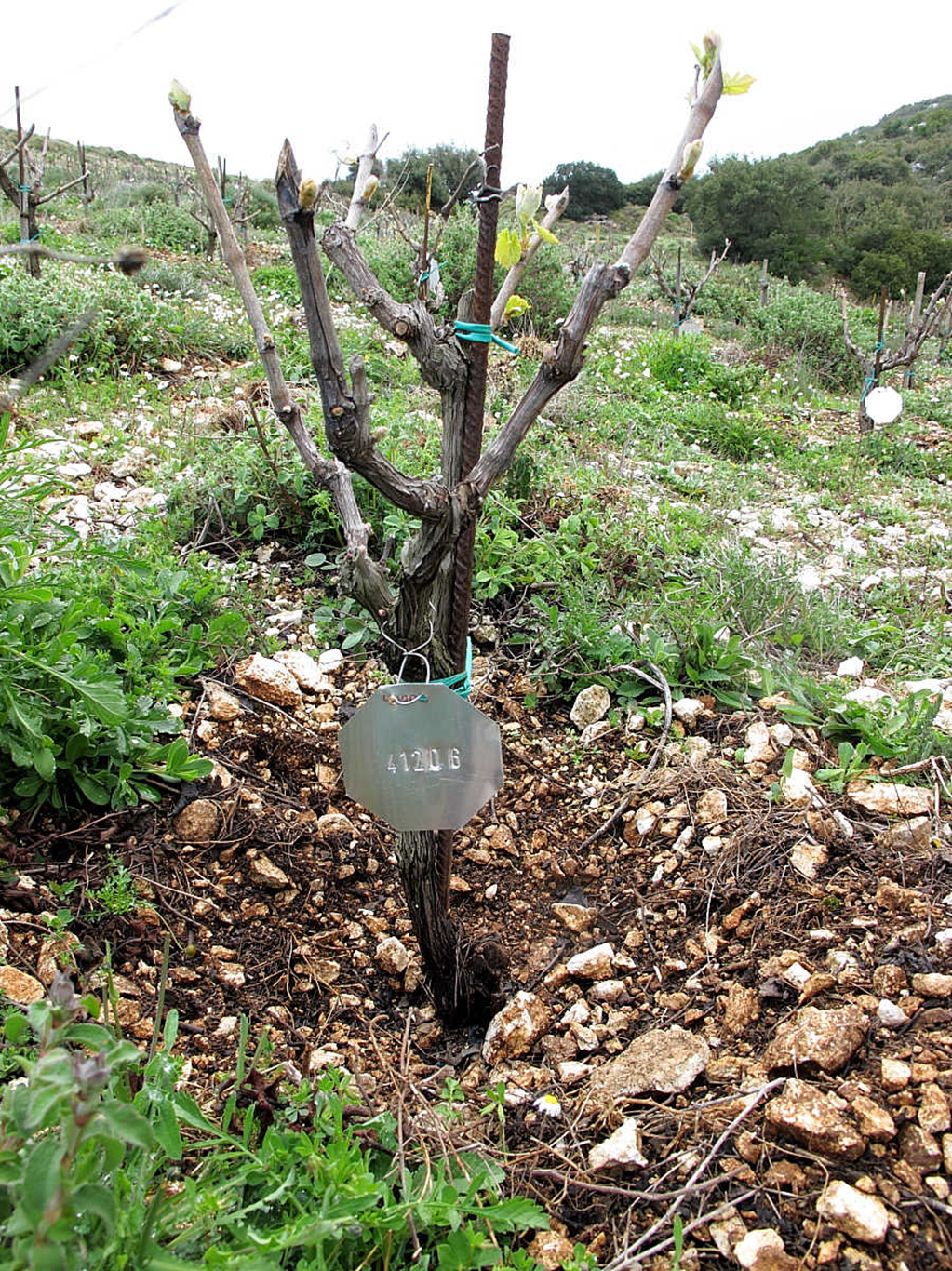

Figure 6. Pruning at the Omala vineyard: (a) each shoot is shortened to 3–4 buds, and (b) the vineyard a few days after pruning.
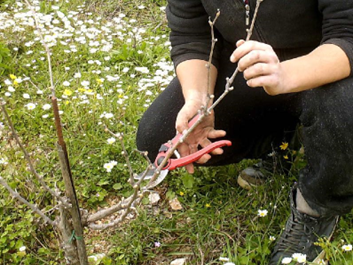

Figure 7. Pruning a Robola vine at the Omala vineyard.
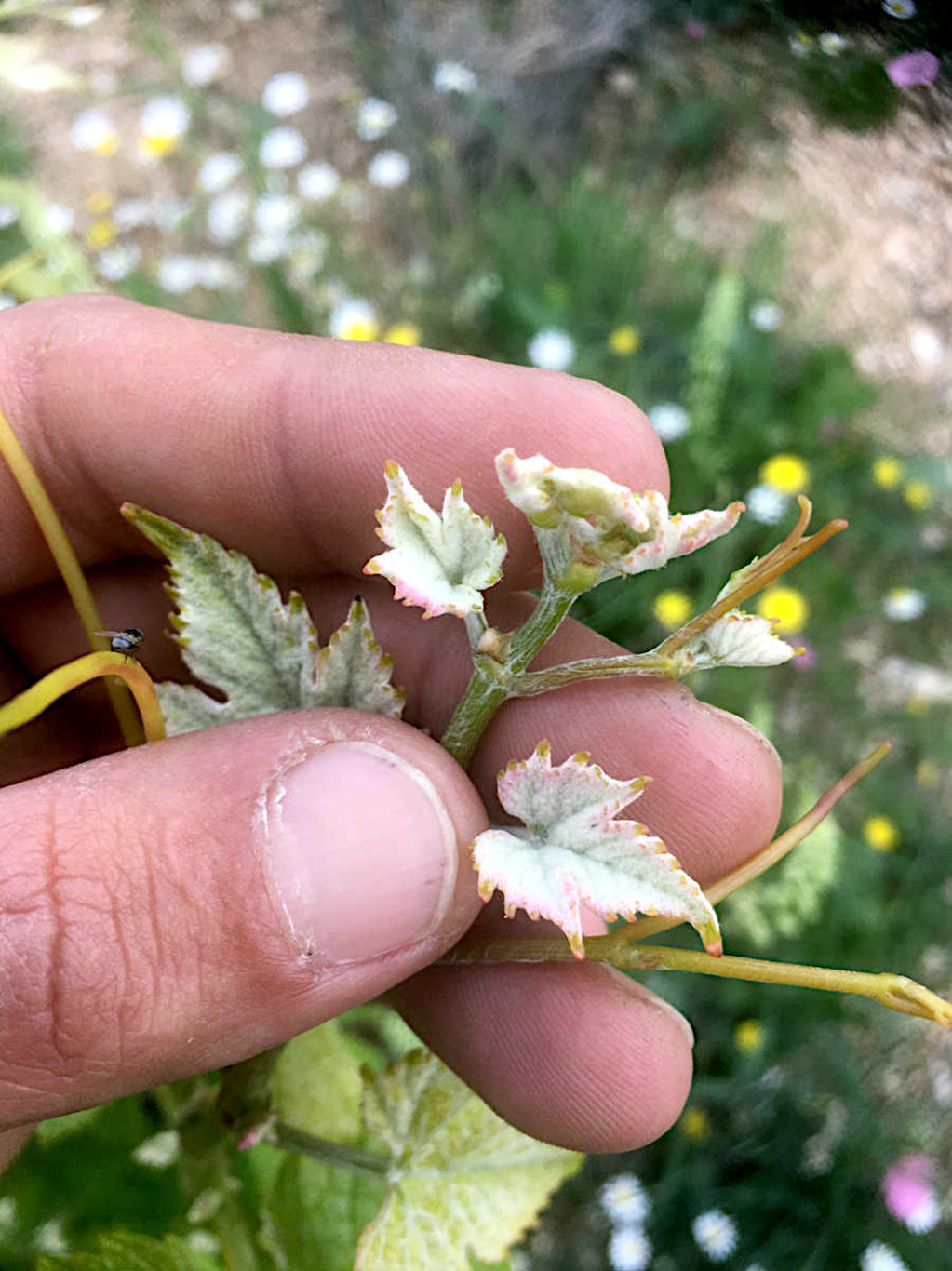
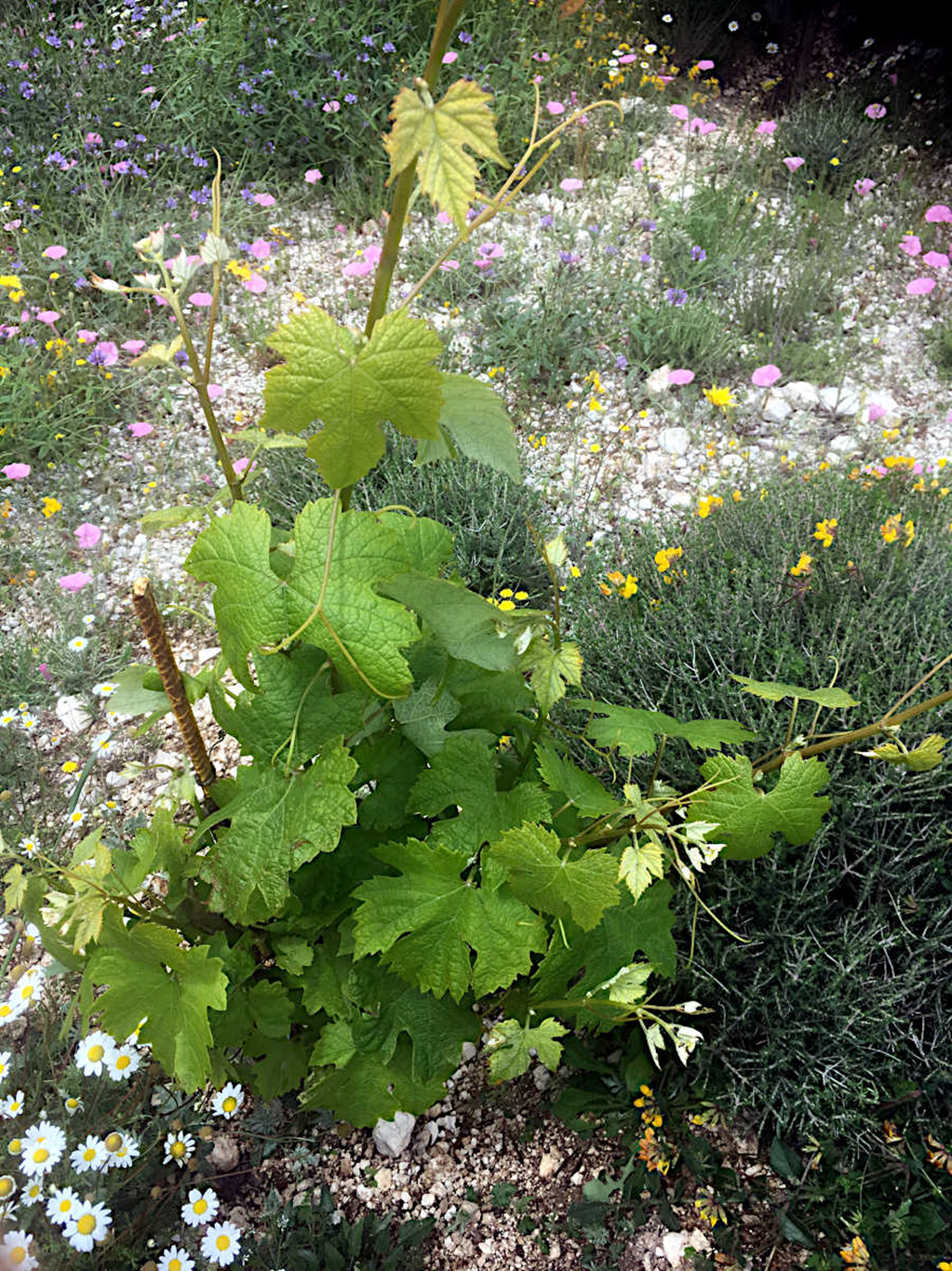
Figure 8. Shortening the shoots at the Omala vineyard: (a) we remove the apical bud plus four leaves, and (b) the result of shortening.
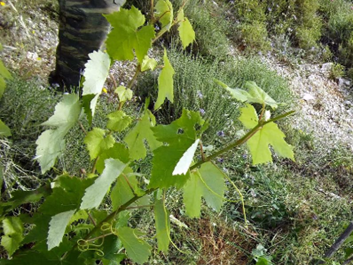
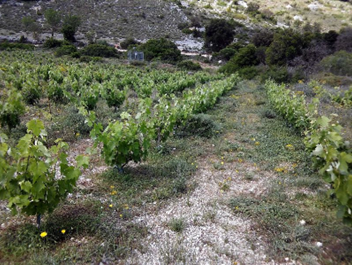
Figure 9. The result of shortening the shoots at the Omala vineyard.
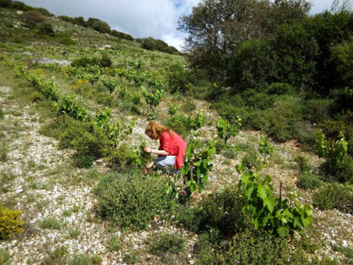
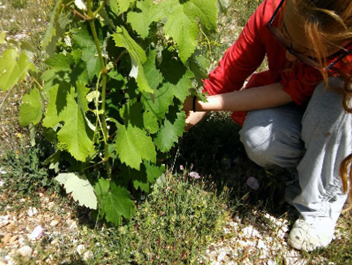
Figure 10. Removing lateral shoots at the Omala vineyard.
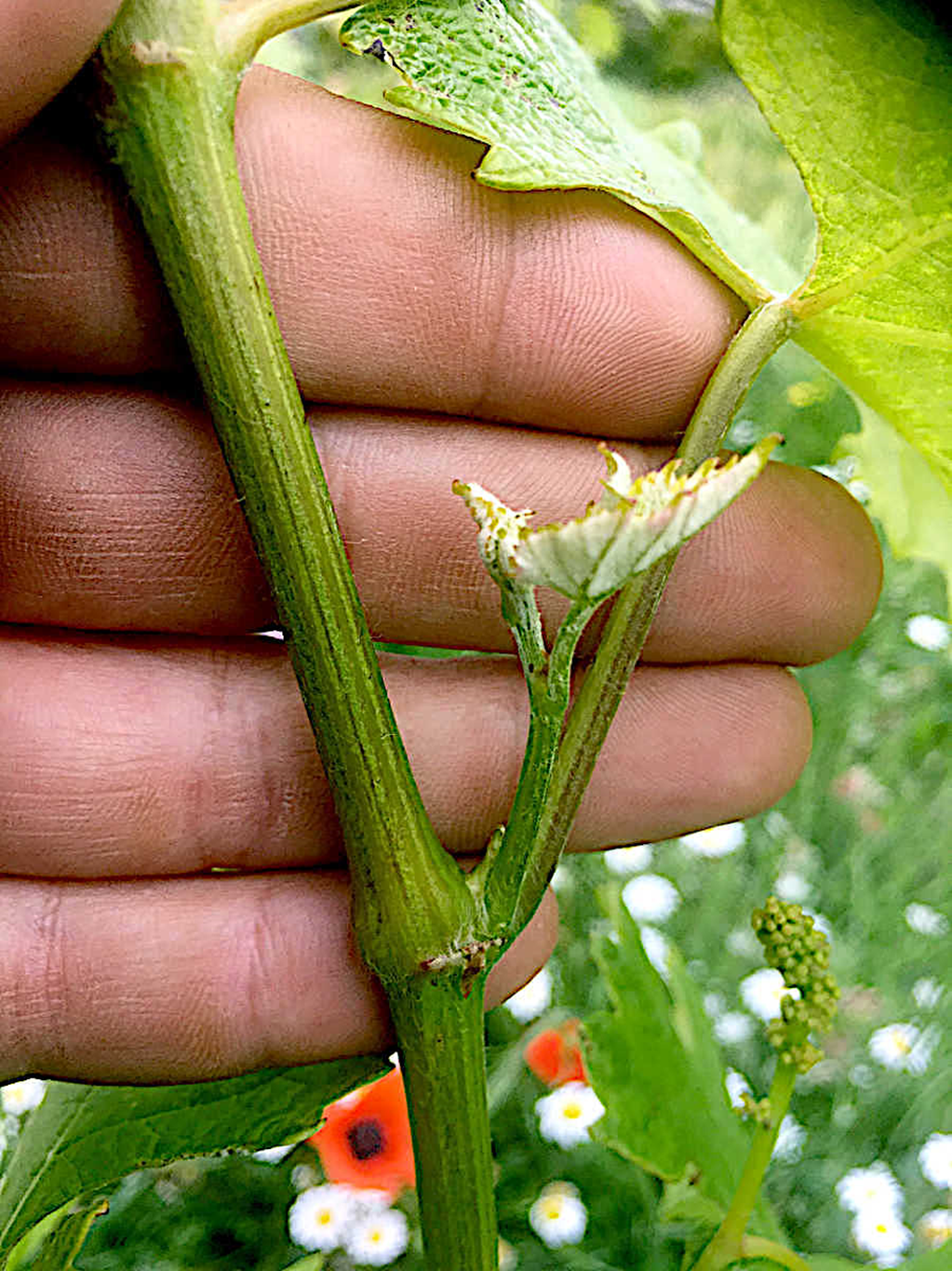
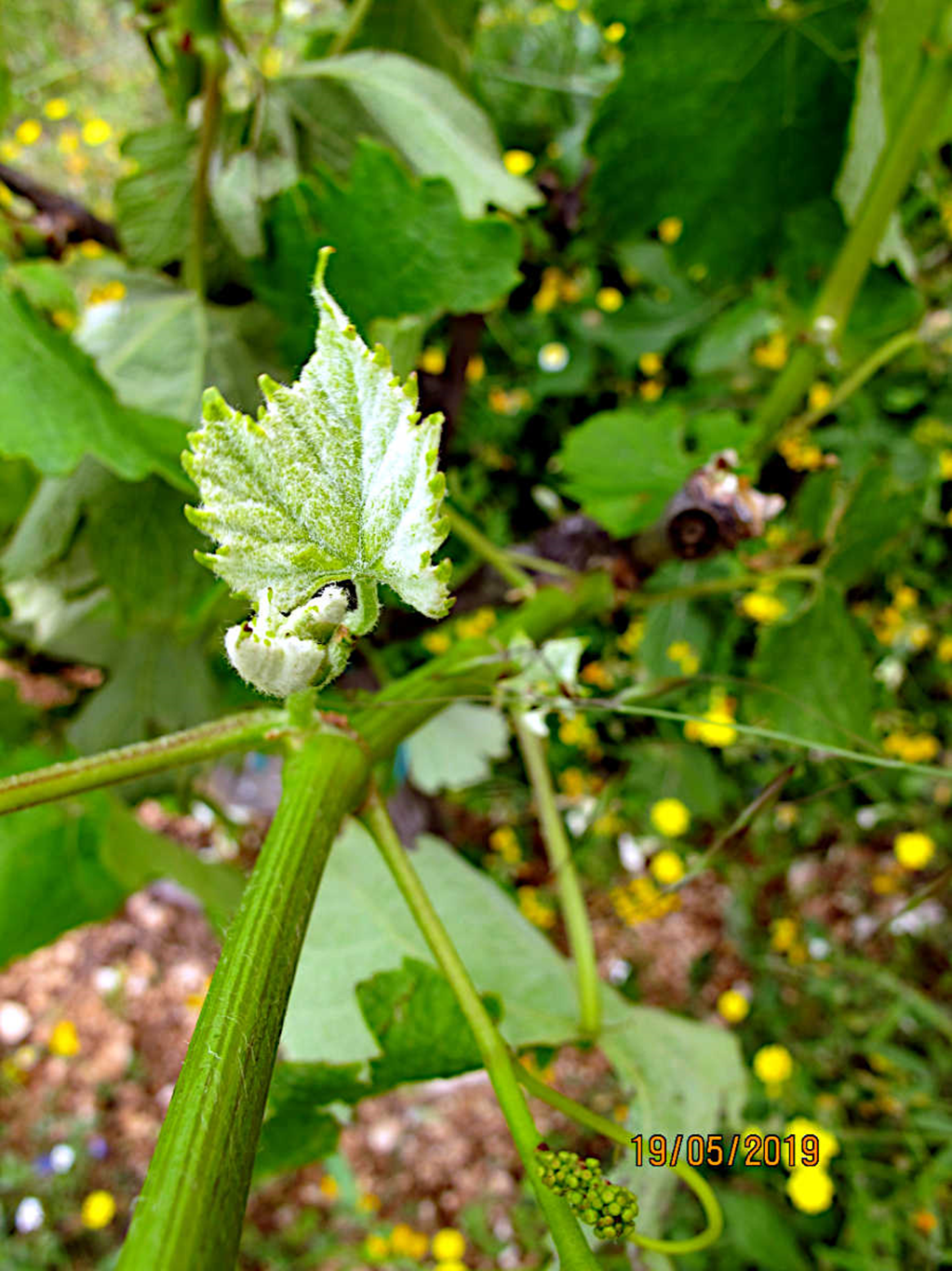
Figure 11. Removing lateral shoots at the Omala vineyard: Lateral shoots that must be removed from the main shoot.

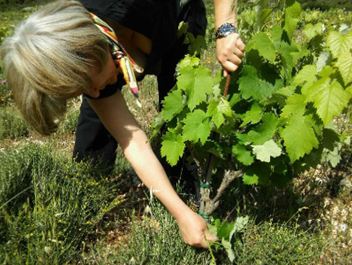
Figure 12. Removing lateral shoots at the Omala vineyard.
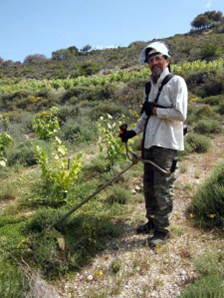
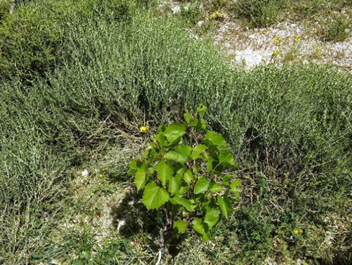
Figure 13. Controlling native vegetation with a shoulder-mounted weed cutter at the Omala vineyard.

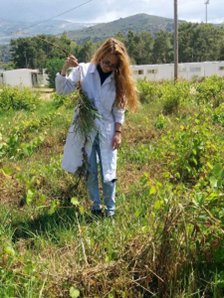
Figure 14. Controlling native vegetation at the University vineyard: (a) with a weed cutter and (b) weeding by hand.

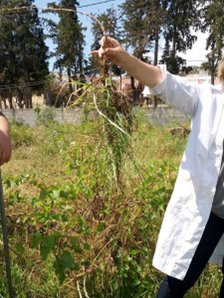
Figure 15. Controlling the perennial grass Stenotaphrum secundatum by weeding at the University vineyard.
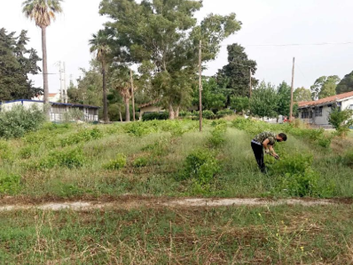
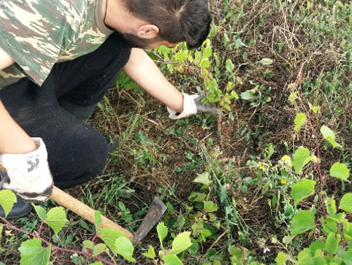
Figure 16. Controlling native vegetation by hoeing at the University vineyard.


Figure 17. The result of removing native vegetation by hoeing at the University vineyard around (a) European vine and (b) 1103 Paulsen rootstock.
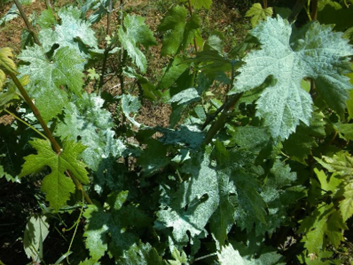

Figure 18. Protecting the Omala vineyard through dusting with (a) copper sulfite and (b) sulfur.


Figure 19. Protecting the Omala vineyard with sulfur: (a) during dusting and (b) after dusting.
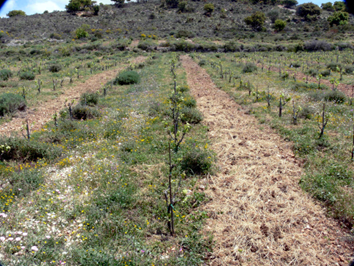

Figure 20. Roto-tilling for: (a) manure incorporation at the Omala vineyard and (b) controlling native vegetation at the University vineyard.
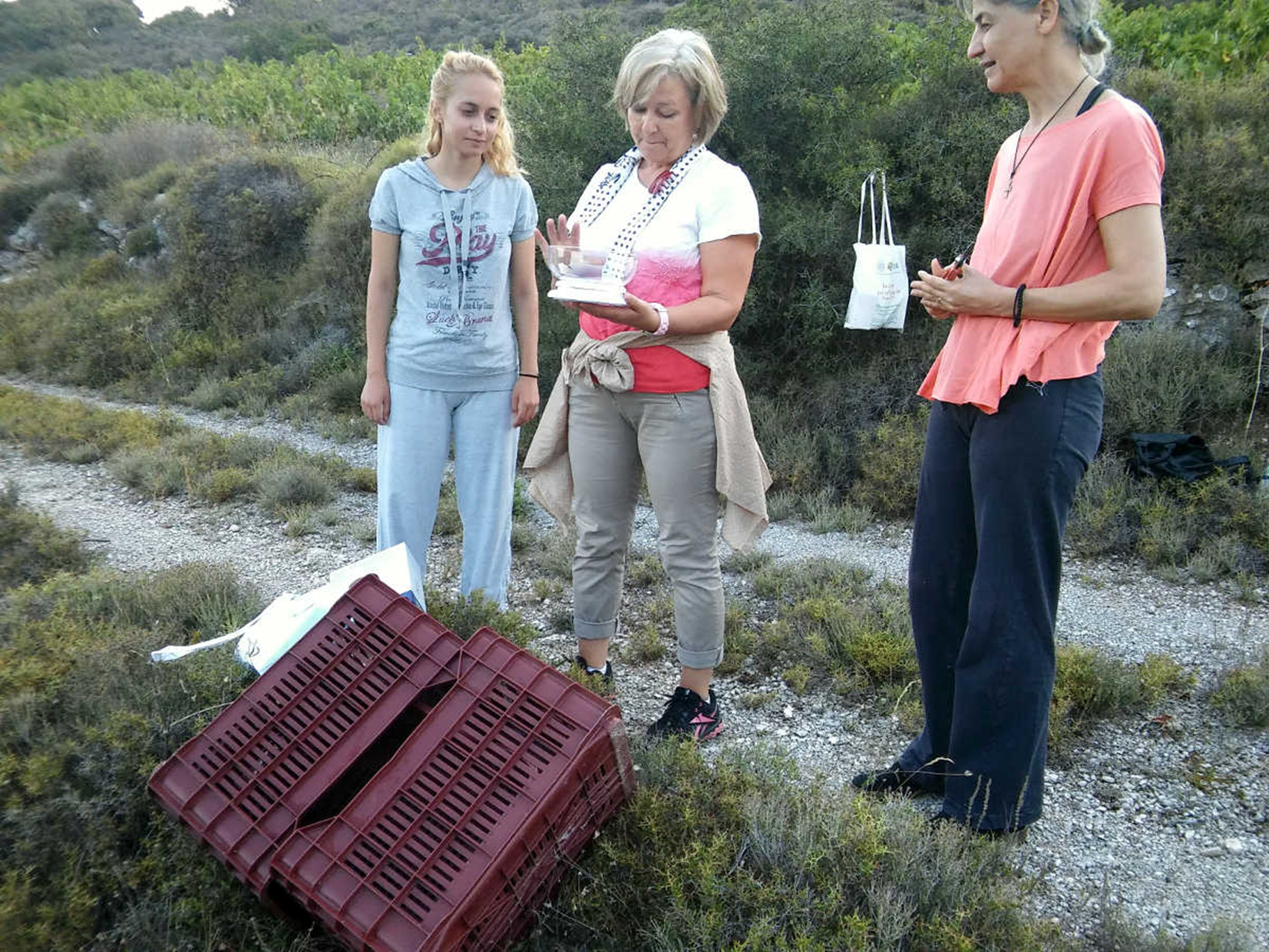
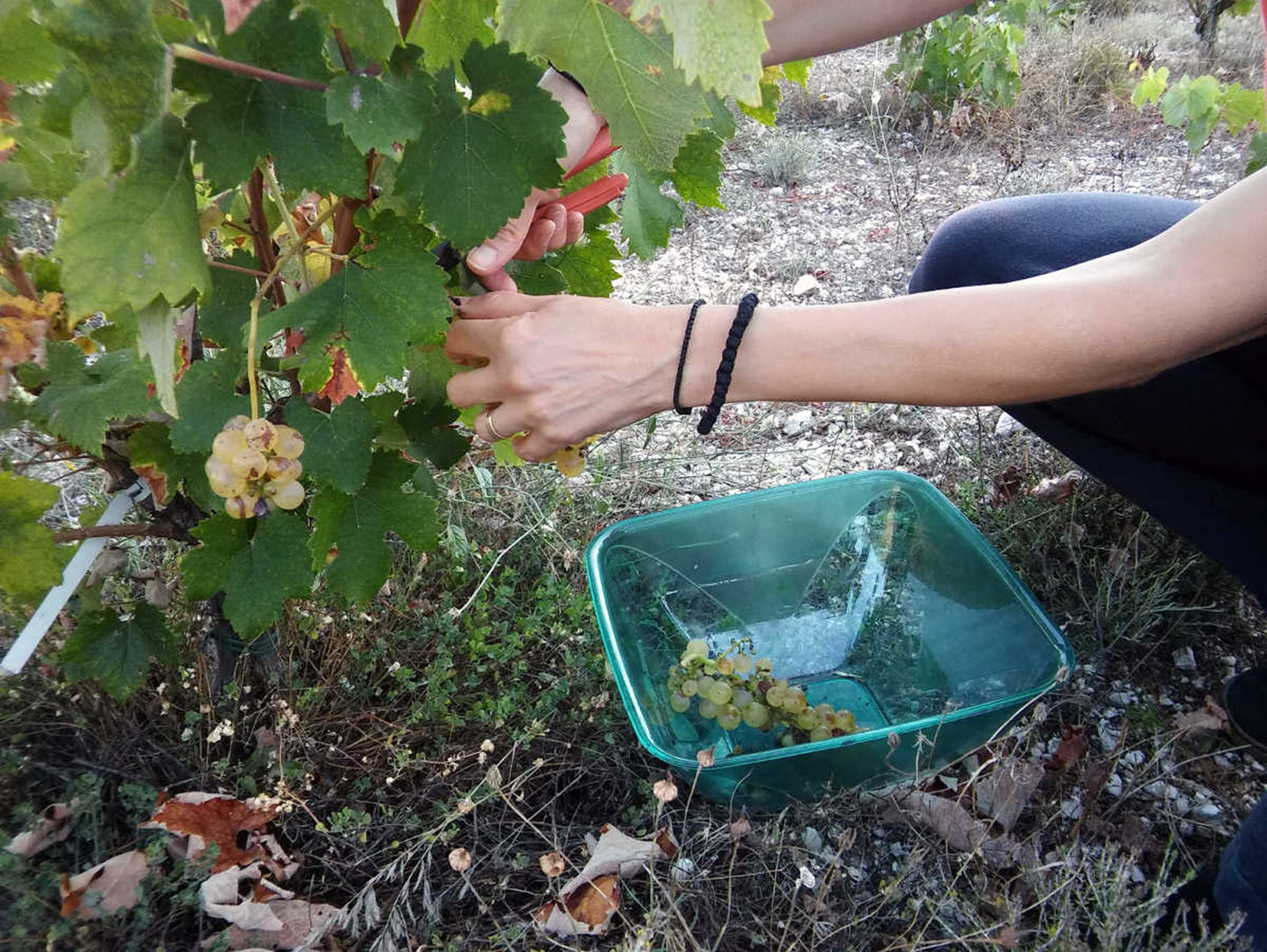
Figure 21. Grape harvest at the Omala vineyard: (a) testing the weighing scales and (b) harvesting the grapes and placing them in the intermediate bucket before weighing.


Figure 22. Grape harvest at the Omala vineyard: (a) transferring the grapes from the intermediate bucket to the bucket of the weighing scale and (b) completing the log sheet with the grape mass from each vine.
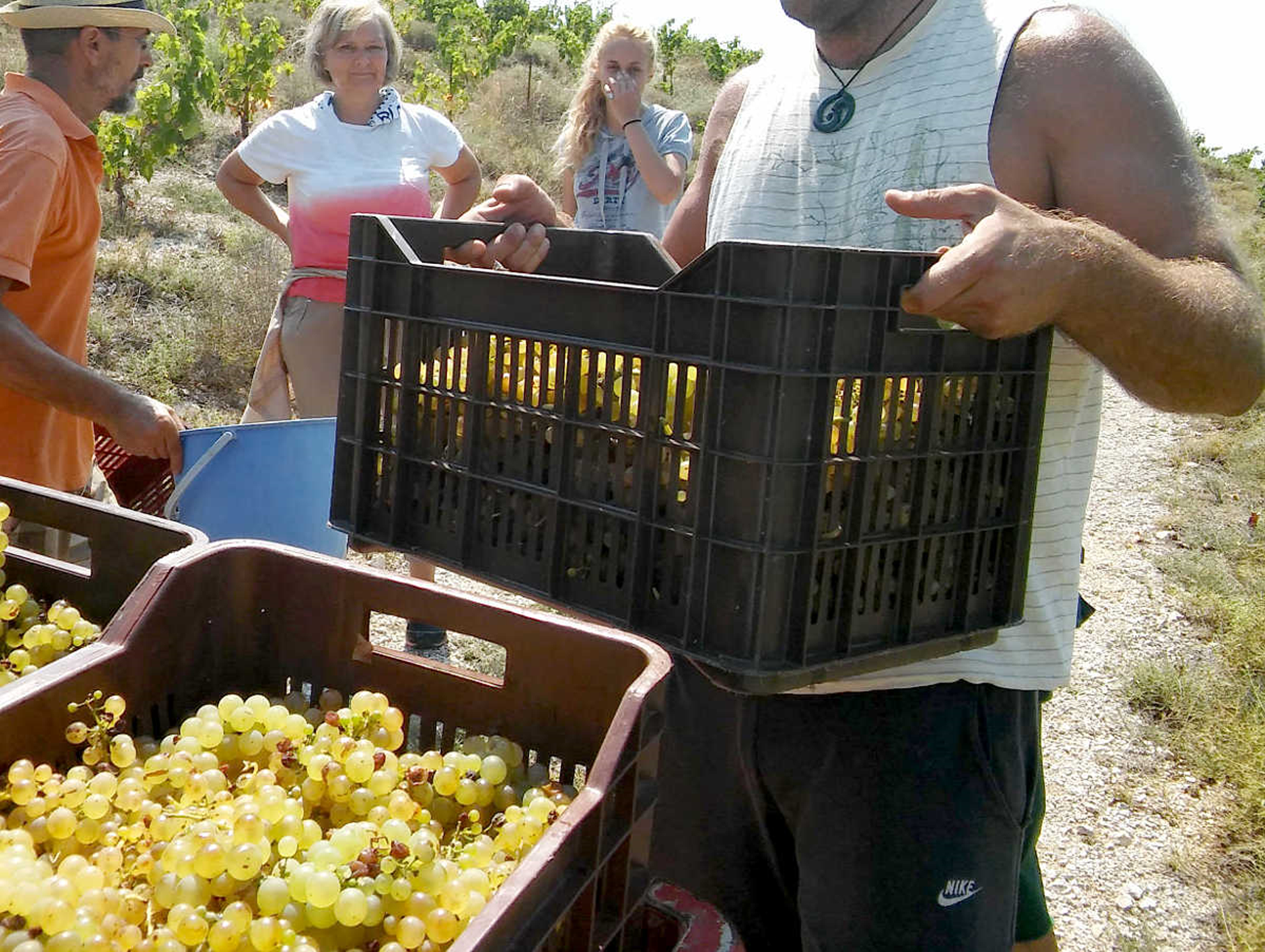
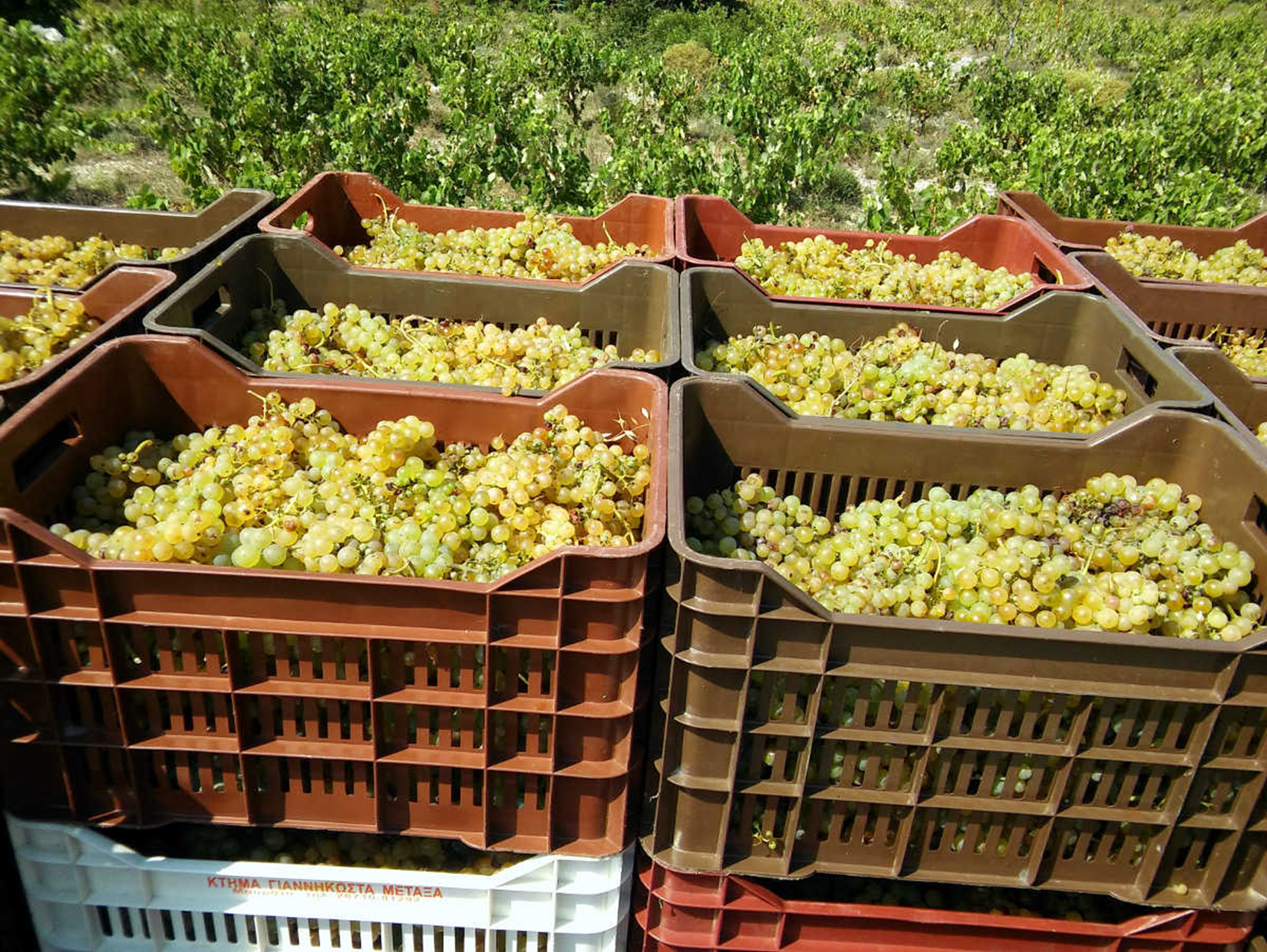
Figure 23. Grape harvest at the Omala vineyard: (a) loading the crates onto the truck and (b) transporting the harvest to the winery.

